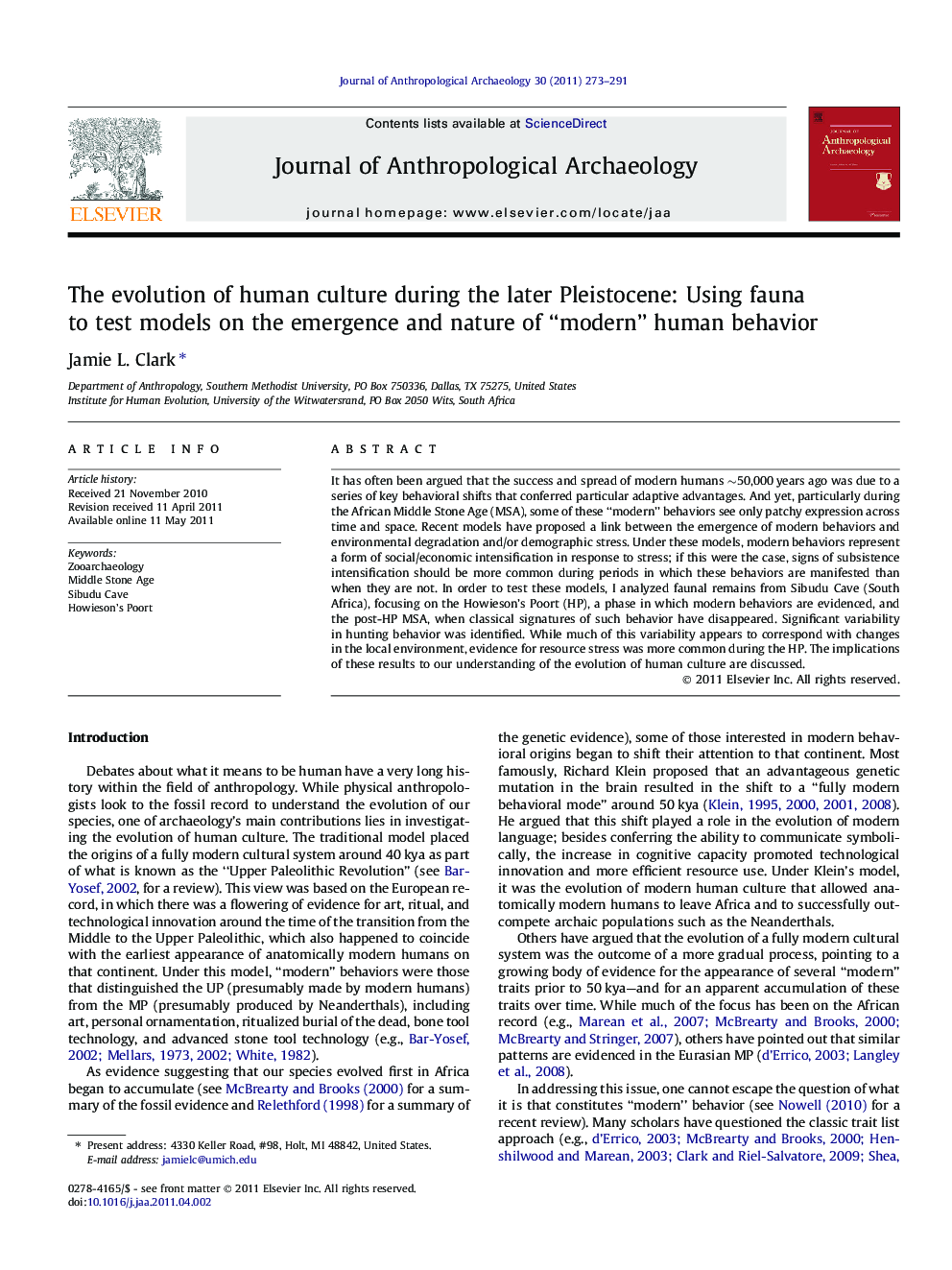| Article ID | Journal | Published Year | Pages | File Type |
|---|---|---|---|---|
| 1035040 | Journal of Anthropological Archaeology | 2011 | 19 Pages |
It has often been argued that the success and spread of modern humans ∼50,000 years ago was due to a series of key behavioral shifts that conferred particular adaptive advantages. And yet, particularly during the African Middle Stone Age (MSA), some of these “modern” behaviors see only patchy expression across time and space. Recent models have proposed a link between the emergence of modern behaviors and environmental degradation and/or demographic stress. Under these models, modern behaviors represent a form of social/economic intensification in response to stress; if this were the case, signs of subsistence intensification should be more common during periods in which these behaviors are manifested than when they are not. In order to test these models, I analyzed faunal remains from Sibudu Cave (South Africa), focusing on the Howieson’s Poort (HP), a phase in which modern behaviors are evidenced, and the post-HP MSA, when classical signatures of such behavior have disappeared. Significant variability in hunting behavior was identified. While much of this variability appears to correspond with changes in the local environment, evidence for resource stress was more common during the HP. The implications of these results to our understanding of the evolution of human culture are discussed.
► Models linking the emergence of modern behavior to resource stress require testing. ► Tested models using Middle Stone Age faunal remains from Sibudu (South Africa). ► Faunal data provide tentative support for the stress models.
